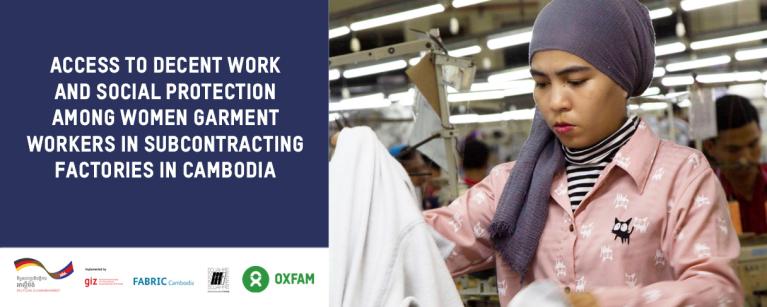Introduction
The right to Decent Work is recognised in the Universal Declaration of Human Rights, which has provisions dealing not only with “the right to work”, but with the various aspects of decent work, including just and favourable conditions of work, protection against unemployment, equal pay, social protection, and the right to form and join trade unions. Achieving the right to Decent Work is a key target of the United Nations Agenda 2030, with SDG8 calling for countries to “promote sustained, inclusive and sustainable economic growth, full and productive employment and decent work for all”.
As the country’s largest formal sector employer, the garment industry in Cambodia is often seen as a flagship for Decent Work in the Kingdom, as well as beyond. Labour rights, conditions, and protections for workers in the sector are generally perceived to have improved steadily over recent years. This is in part due to robust monitoring by the ILO-IFC’s Better Factories Cambodia (BFC) programme, which conducts independent inspections and assessments of garment factories to ensure compliance with labour standards. BFC has been a model for the ILO-IFC Better Work Programme that has since been extended to other garment producing countries, including Vietnam, Indonesia, Bangladesh, and Ethiopia.
The garment sector in Cambodia also benefits from the widespread presence of trade unions within factories. With an estimated 60% of garment workers being members of a trade union, union density within the sector is regarded as among the highest of all industries in any country in Asia (Nuon and Serrano 2010). Studies (e.g. Oka 2016) show that trade union presence has a positive impact for workers in the garment sector in Cambodia, improving factories’ compliance with labour standards across diverse areas including wages, hours, and leave.
The Better Factories programme is largely (though no longer exclusively) limited to large, registered, export-oriented factories. However, in recent years (Lawreniuk, Brickell, and McCarthy 2022; Salmivaara 2021) – or perhaps considerably earlier (ILO 2017) – a significant subcontracting segment of the industry has proliferated that sits beyond the scope of this assessment programme. Here, subcontracting refers to the practice of assigning, or outsourcing, part of the obligations and tasks under a contract to another party known as a subcontractor. For example, a factory enterprise may outsource part of an order to a second facility to manage demand or perform specialist tasks. Moreover, trade union presence is reported to be limited or non-existent in these subcontracting facilities (Lawreniuk, Brickell, and McCarthy 2022; Nuon and Serrano 2010).
Reliable data on the size of the subcontracting segment of the garment and footwear industry, or conditions within it, however, are currently “scarce” (Salmivaara 2021:56). Common estimates suggest that the subcontracting segment of the industry may account for between 15% and 30% of the total industry workforce (e.g. Lawreniuk and Nuon 2022; Salmivaara 2021; ILO 2017; Nuon and Serrano 2010). However, the exact number of subcontracting enterprises and workers is difficult to accurately measure because of the large number of facilities who do not register with official authorities, such as the Ministry of Commerce (responsible for business registration) or Ministry of Economics and Finance (responsible for taxation registration), or employer organisations like TAFTAC or the Cambodian Footwear Association (CFA).
The widespread existence of subcontracting facilities with limited labour rights enforcement therefore poses threat to the progress made towards achieving Decent Work and social protection targets for female workers in the garment sector in Cambodia. This requires urgent investigation to clarify the nature and scale of the problems within the subcontracting segment and identify solutions for remedy that can improve the lives of – predominantly women – workers in the sector.
Check out the policy brief here to learn more.
